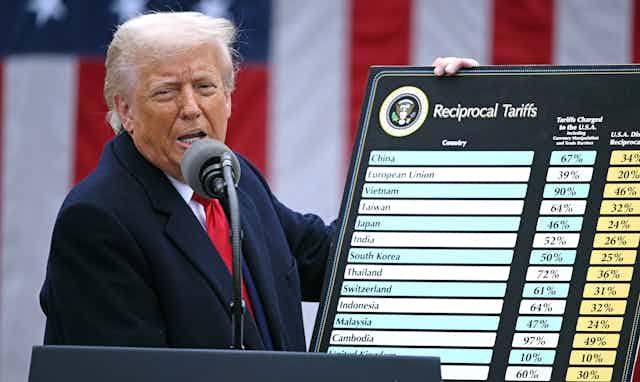
China Three Gorges Corp. this summer turned on the first set of generators at the massive Wudongde hydropower plant, deep in the mountains of Yunnan province. About 170 kilometers (106 miles) downstream on the Jinsha River sits Baihetan, the last of its kind, scheduled to go into operation next year.
They’re the final two mega-dams in a Chinese construction boom that goes back more than half a century, one that became increasingly mired in controversy over the trade-off between the benefits of renewable energy and flood prevention and the social and environmental costs.
Now, China’s hydro industry is down-shifting toward smaller projects and pumped storage. Engineers have run out of the easiest locations to power massive sets of turbines and the falling cost of rival energy sources such as solar means it isn’t worth moving on to more challenging locations.
The future of hydro is going to be pumped storage and is also going to be smaller and smaller.
Frank Yu, an analyst with Wood Mackenzie Ltd.
China’s dam-building era began in the 1950s, soon after the Communist Party gained power, but it reached a crescendo in the past two decades. After Baihetan gears up to full capacity in late 2022, China will have completed five of the world’s 10-biggest hydropower plants in just 10 years. China’s dams generated more electricity in 2017 than the total supply of every other country in the world besides the U.S. and India.
Harnessing China’s rivers, which flow from the snowy peaks in the west to the fertile deltas in the east, has always been a prime concern of its leaders. More than 4,000 years ago, the emperor known as Yu the Great gained eternal fame by employing dikes, dams, and canals to control flooding that plagued the ancient civilization.
The Communist Party used a disastrous flood in 1931 to argue that the Kuomintang government was a failure, and when Mao Zedong took over in 1949 dam-building was a priority. But construction and engineering were often subpar, resulting in more disasters like the Banqiao and Shimantan dam collapses in 1975 that killed as many as 240,000 people.
As China emerged onto the global scene in the late 1990s, so too did its dam-building industry. “Since the turn of the century, the country has more than quadrupled its installed capacity and accounted for over half of global hydropower growth,” said Samuel Law, an analyst for the International Hydropower Association.
The modern mega-dam building period began in earnest with the long-touted project to block the Yangtze River at the base of the Three Gorges, a series of narrow passageways between mountains that hem in China’s longest river.
The project was unusually controversial in China. Proponents touted the benefits of clean energy, improved navigation, and the chance to tame one of the nation’s most flood-prone rivers. Opponents focused on the million-plus people who would be forced to resettle from the narrow strips of fertile orange groves along the river’s edge to harsher environments on higher ground, along with the loss of cultural and archaeological sites.
Work began in 1994 and when the final generator was switched on in 2012 it became the largest hydropower plant in the world, generating 22.5 gigawatts. Two more massive projects, the 6.4-gigawatt Xiangjiaba, and the 13.9-gigawatt Xiluodu, were completed in 2014 on the Jinsha River, which feeds into the Yangtze. Along with Wudongde and Baihetan, the 1,200-kilometer stretch of water will have five of the 10 largest hydropower plants on earth.
Pickings are about to get slimmer. Big hydropower plants require large flows of water cascading down a steep change in altitude and China has tapped most of the best prospects that are easy to reach.
After Wudongde and Baihetan, there are no dams bigger than 10 gigawatts under construction or in planning or permitting stages, according to Pavan Vyakaranam, a senior power analyst at GlobalData.
A similar story happened in the U.S., where massive government dam projects helped pull the country out of the Great Depression in the late 1930s, including the Hoover Dam, the world’s largest at the time. By the end of World War II, hydroelectricity supplied more than a third of the nation’s needs.
Construction peaked in the 1960s, then slowly ground to a halt as utilities turned to nuclear power and opposition grew from farmers, environmentalists, and Native Americans. Last year, hydroelectricity provided 6.6% of U.S. power supplies, according to the Energy Information Administration.
China hasn’t completely run out of space for hydro. There are plenty of sites for smaller 1-to-3 gigawatt plants that would be signature projects in most other countries. So-called pumped-hydro projects can help store intermittent renewable energy for when it’s most needed. And it does still have potential sites for mega-dams, they just aren’t easy to get to.
The most prominent would be the Motuo dam on the Yarlung Tsangpo River in Tibet, which at one point was being eyed as a potential 38-gigawatt plant, nearly double the size of Three Gorges. The Chinese government is still researching the site’s feasibility, according to a person familiar with the studies, who asked not to be identified because the information isn’t public.
But such a development is seen as unlikely by many analysts. Getting materials and workers to such a remote area would be enormously costly, as would stringing the power lines needed to get the electricity to market. And that doesn’t factor in the geopolitical issues around damming a conduit that feeds some of India’s major rivers, including the Brahmaputra.
As China’s dam builders pack up their tools at home, they are expanding overseas. China’s major development banks have financed nearly $44 billion worth of hydropower projects globally since 2000, according to researchers at Boston University’s Global Development Policy Center.
“Chinese hydro companies are investing heavily in other countries in South Asia, South East Asia, Africa, and Latin America,” said GlobalData’s Vyakaranam.




27 Comments
Pingback: relax
Pingback: 4k psilocybe cubensis
Pingback: land slot auto เว็บตรง
Pingback: สติ๊กเกอร์งานฌาปนกิจ
Pingback: tải sunwin
Pingback: https://vhnbio.com
Pingback: rca77
Pingback: ตู้เชื่อม
Pingback: รีวิว
Pingback: Telegram中文版
Pingback: pgslot
Pingback: gym equipment shop
Pingback: ดูบอลสด66
Pingback: โคมไฟ
Pingback: เว็บพนันออนไลน์เงินวอน
Pingback: Open link
Pingback: Al Yarmouk University College
Pingback: Mostbet
Pingback: buy magic mushroom online
Pingback: ปั้มวิวไลฟ์สด
Pingback: เช่าเครื่องสเลอปี้
Pingback: pin up app download
Pingback: เว็บพนันออนไลน์เว็บตรง
Pingback: รีเบต xm
Pingback: exchange monero without kyc
Pingback: ufabet777
Pingback: ปลูกผม